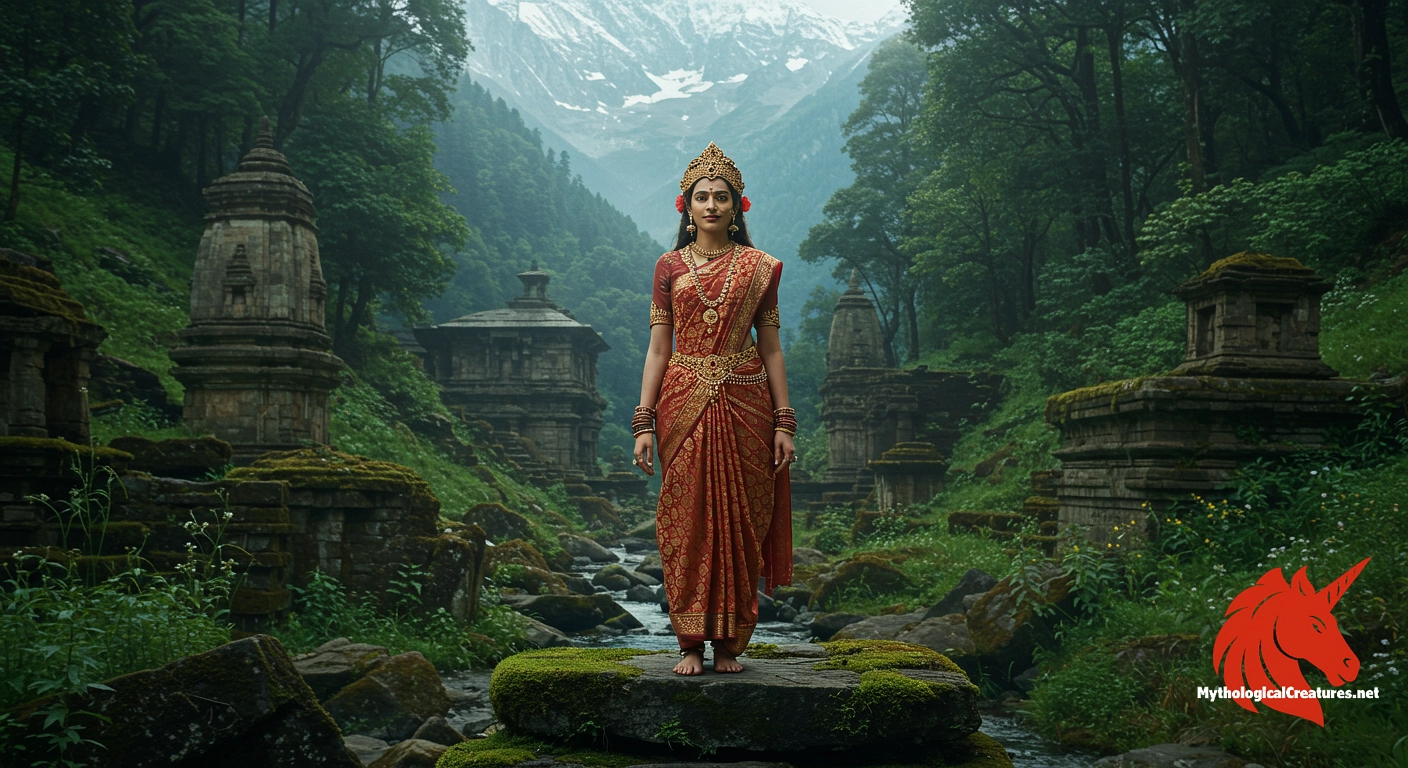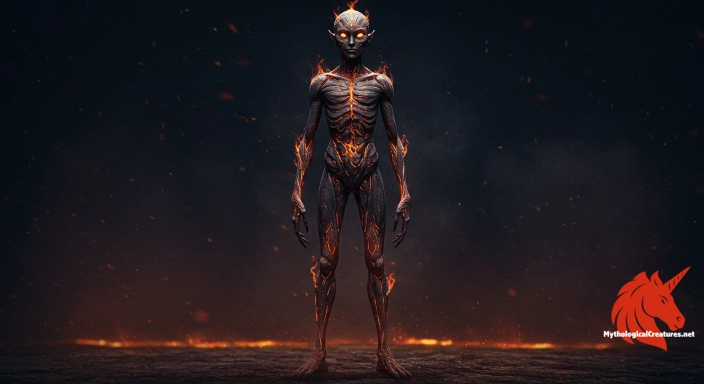Parvati: Parvati is a principal Hindu goddess celebrated as the divine consort of Shiva and the embodiment of cosmic feminine energy.

Parvati
Parvati - Parvati is central to Hindu philosophy as she represents the creative and nurturing force that activates and sustains the cosmos, balancing Shiva's ascetic nature with the demands of worldly life.
Origins & First Encounters
Parvati stands as one of the most revered deities in Hindu mythology, embodying power, beauty, and nurturing grace. Her origins can be traced back to ancient epic traditions dated between 400 BCE and 400 CE, when she first emerged as a transformative cosmic force. She is celebrated not only as the devoted consort of Shiva but also as the dynamic personification of creative energy that nurtures all of existence. Known by many names such as Uma and Gauri, each aspect of her character reflects distinct qualities admired throughout the ages. Her transformation from Sati into Parvati symbolises themes of sacrifice, rebirth, and the eternal cycle of life. Deeply intertwined with the cosmic order, her role harmonises the ascetic discipline of Shiva with the vibrancy of household life. The rich narratives surrounding her imbue her with a deep sense of compassion, making her an exemplar in the melding of worldly experience with transcendent spirituality. Her depiction in ancient texts and temple iconography has made her a cornerstone of devotional practice for millions. In embodying both the fierce protector and the gentle nurturer, Parvati represents a balanced energy pivotal to maintaining cosmic equilibrium. Today, her legacy continues to infuse modern worship and philosophical discourse with the timeless values of love, strength, and renewal.
Source Texts & Tale Variants
The stories of Parvati are intricately woven into the fabric of ancient Indian literature, with numerous references found in the Puranas and various Shaiva hymns. Her narrative as the reincarnation of Sati has been detailed in texts that celebrate her sacrifice and subsequent transformation into a symbol of divine motherhood. Multiple ancient scriptures present varying versions of her character, each highlighting unique attributes that range from tender devotion to formidable strength. Some traditions emphasise her role as the gentle consort, while others reveal a more martial aspect aligning her with forms such as Durga and Kali. In several narratives, her commitment to Shiva is portrayed as a driving force that restores cosmic balance and nurtures the creative energy of the universe. Different story variants have been passed down through oral traditions and folklore across generations, adding layers of nuance to her mythos. Over time, these textual and oral traditions have enriched her character, leading to a diverse yet resonant portrayal across regions. The multiplicity of accounts not only underscores the dynamic nature of her myth but also reflects the evolving religious and cultural landscape of South Asia. Her presence across ancient scriptures underlines the importance of storytelling in expressing spiritual truths and moral ideals. Each variant contributes uniquely to the enduring appeal of Parvati as a goddess who bridges the eternal with the everyday.
Form & Powers
In traditional iconography, Parvati is depicted as a vision of ethereal beauty, combining grace with an inner strength that captivates the observer. Her features are rendered with delicate refinement, often portrayed with luminous eyes and a serene expression that embodies both compassion and resolve. Artistic renditions frequently show her with lustrous, flowing hair, sometimes crowned with intricate headdresses and floral embellishments. She is usually adorned with exquisite jewellery that accentuates her divine stature, with each ornament symbolically representing facets of her cosmic powers. In some depictions, especially those emphasising her warrior aspect, she is shown with multiple arms bearing symbolic weapons, which underscore her ability to protect and preserve cosmic order. Her complexion is typically radiant or fair, a subtle nod to her purity and transcendent energy. Traditional paintings and sculptures illustrate her in flowing garments that merge practicality with sumptuous aesthetics, reflecting cultural styles of various periods. The artistic portrayal of her often includes symbolic elements such as the lotus flower and the mirror, which speak to themes of rebirth and self-reflection. These visual details serve not only as a feast for the eyes but also as a medium for conveying spiritual narratives. Through centuries of creative expression, Parvati’s physical depiction has evolved into a tapestry rich with metaphor and divine symbolism.
Regional Faces
Across South Asia, the representation of Parvati adapts to regional cultural aesthetics, resulting in a rich diversity of appearances and attributes. In northern India, she is frequently revered as Gauri, where she is portrayed with a luminous complexion and a gentle, graceful demeanour that highlights her role as the auspicious mother. Southern traditions often emphasise her nurturing aspects, casting her in the light of local matriarchal figures and integrating her into regional folk practices. In Nepal, the goddess is depicted with a distinctive Himalayan influence, where her iconography blends traditional motifs with local artistic styles that evoke the rugged beauty of the mountains. Local festivals and temple rituals further embellish her character with cultural nuances that resonate deeply with community values and indigenous beliefs. In some regions, Parvati assumes a fiercer form, akin to the manifestation of Durga, complete with multi-armed depictions and martial attributes reflective of regional narratives of empowerment. The local attire, ornaments, and even the setting of each depiction subtly shift to mirror the tastes and spiritual inclinations of the people. Regional interpretations have also introduced unique mythological episodes that speak to local historical events and social structures. This mosaic of regional variations contributes to a living tradition where the goddess remains ever-adaptable and relatable. In every form, Parvati’s essence as a nurturer and an embodiment of divine energy endures, binding diverse communities with her timeless appeal.
Cultural Parallels
Parvati’s multifaceted identity offers a rich field for comparative analysis with other goddesses across various cultures. Her role as a nurturing mother, a protector, and a cosmic force finds resonance with figures such as Isis in ancient Egyptian tradition, who similarly embodies themes of rebirth and eternal love. Like Demeter of Greco-Roman myth, Parvati is also celebrated for her associations with fertility and the cyclical nature of life, serving as a reminder of the interconnectedness of nature and divine will. Her dynamic combination of compassion and formidable strength echoes through the narrative arcs of mythological figures such as Freyja in Norse tradition, where the divine feminine is revered in both peaceful and martial embodiments. The symbolic representation of Parvati as shakti, or divine energy, parallels other cultural concepts that emphasise the life-affirming power of the feminine. Her ability to transform and adapt to various roles – from the quiet consort to the fierce warrior – invites a dialogue on the universal themes of balance and duality. As with many goddesses in global mythologies, Parvati’s iconography is imbued with symbols that transcend mere aesthetics, aiming to capture profound spiritual truths. Comparative studies reveal that despite distinct cultural contexts, many traditions honour similar attributes in their deities, underscoring a shared human fascination with the creative and destructive capacities of the divine feminine. Through cross-cultural lenses, Parvati emerges not only as a central figure in Hinduism but also as a representative of a universal archetype that celebrates generative power and resilience. This recognition invites further exploration of how the divine feminine is celebrated in diverse spiritual traditions around the world.
Legacy & Modern Evolution
Over the centuries, the depiction of Parvati has evolved dramatically, mirroring the shifts in spiritual and cultural sensibilities across time. Early narratives painted her as the ascetic consort whose love rekindled life in the cosmic cycle, a portrayal steeped in both austerity and deep emotional resonance. Over time, the emphasis on her maternal qualities grew, aligning her with themes of nurturing, fertility, and household harmony, which have become central to her modern appeal. Medieval temple art and sculpture enriched her imagery with layers of symbolism, integrating martial elements alongside her gentle, compassionate aspects. In contemporary culture, Parvati has transcended the boundaries of traditional iconography to become a symbol of female empowerment and resilience, celebrated in literature, dance, and visual arts. Modern reinterpretations often highlight her as a figure who embodies both tradition and transformation, resonating with feminist readings of the divine feminine. Her enduring legacy is not confined to religious practice alone; it permeates social and cultural discussions about gender roles, identity, and spiritual fulfilment. Today, devotees and artists alike continue to draw inspiration from her rich mythological tapestry, ensuring that her story remains relevant to new generations. The continued evolution of her imagery reflects an adaptive spirit, one that speaks to the evolving values of society while remaining rooted in timeless spiritual truths. Parvati’s journey from ancient lore to modern legacy serves as a living testament to the enduring power of myth and the universal appeal of the divine feminine.
Interesting Fact
An intriguing aspect of Parvati is how she personifies both gentle nurturing and fierce protective energy, seamlessly integrating the roles of a devoted wife, caring mother, and powerful cosmic force.
Quick Creature Info
Associations:
Our Mythic Legendary Rating:

Also Sometimes Known As:
Habitat:
Supernatural Powers:
Physical Attributes:
Abilities:
Behavior:
Lore:
Related Creatures, Tales or Lore
- DDurga
- KKali
- SSaraswati
References
Discover Another Mythical Legend You May Not Have Heard Of?
Uncover the mysteries of ancient folklore and expand your knowledge of legendary beings from cultures around the world.
Dare to Meet the Çor....
Mythical Disclaimer: The images and data on this site are derived from various historical and literary sources, but we have found that many myths often have multiple versions and interpretations across references, sometimes contradictory. As a result, these creature depictions are artistic interpretations—imaginative blends of folklore, legend, and a dash of AI guesswork. Because creature descriptions vary widely, our illustrations and accompanying information represent our best effort to honor mythology while bridging creative gaps. Enjoy these interpretations—just remember, we've done our best to respect the stories and validate available data, but in the realm of mythology, details often shift, imagination leads the way, and nothing is ever set in stone!
Curated by the Mythological Creatures Team (rev. May 2025)
